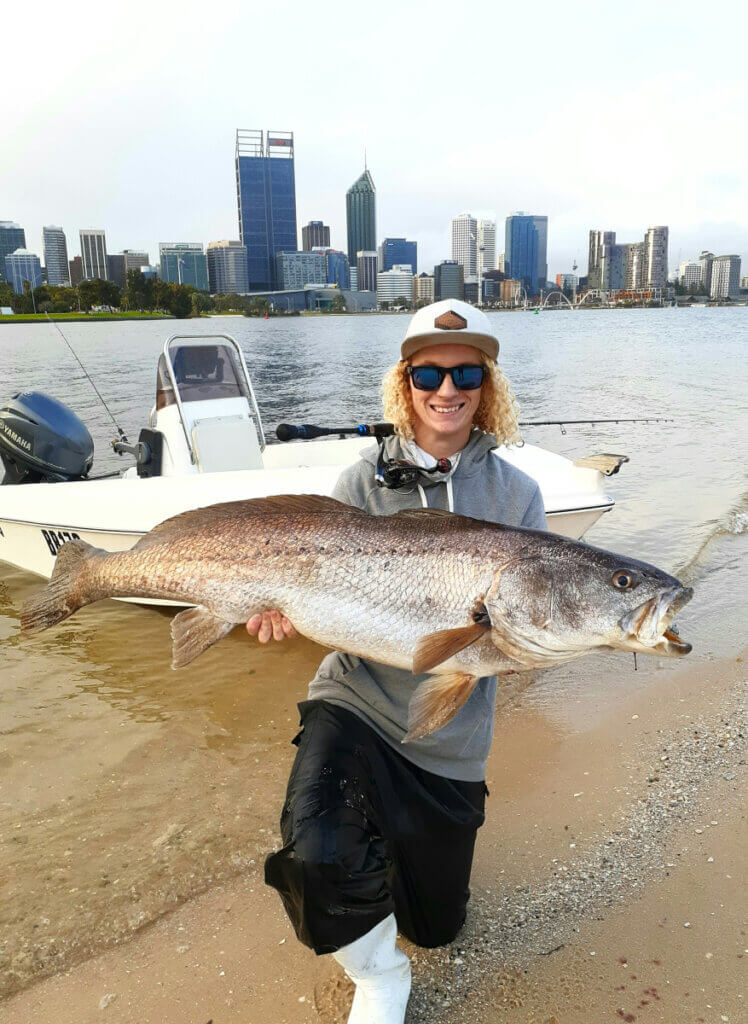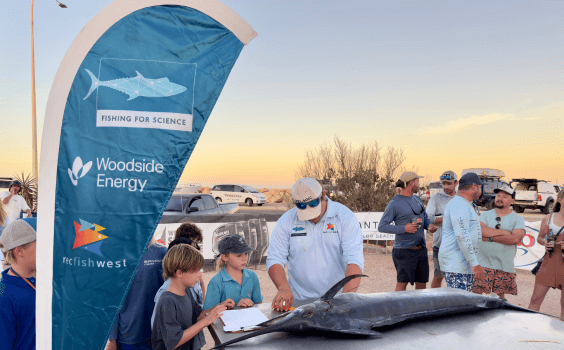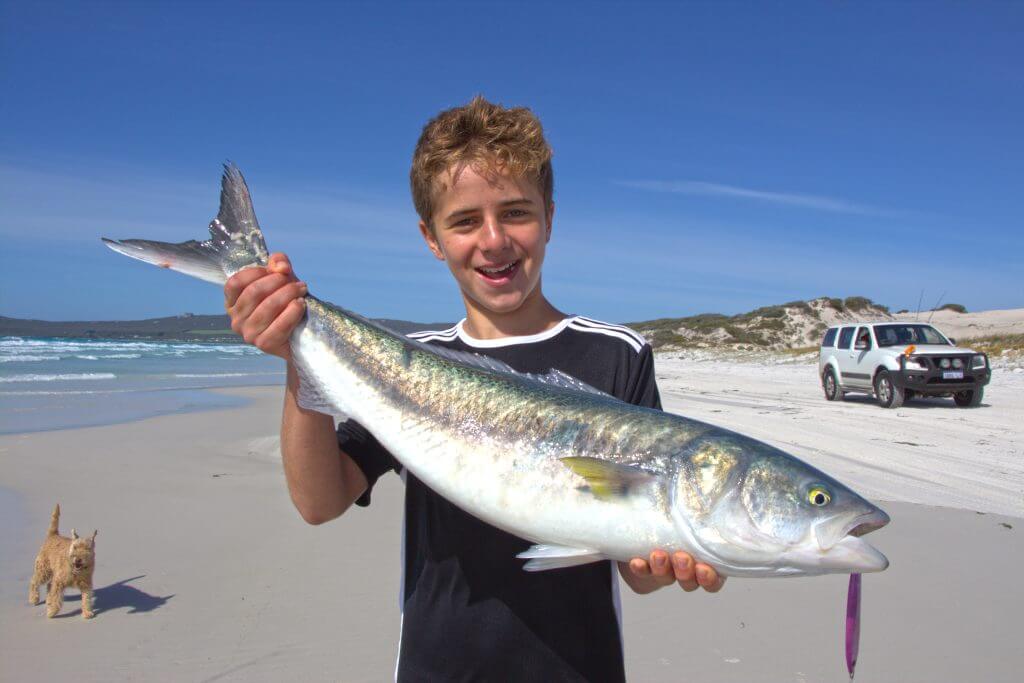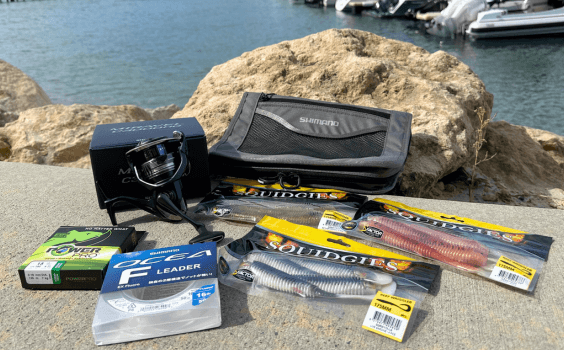Found in rivers, estuaries and at beaches, the sometimes elusive mulloway, often dubbed ‘silver ghosts’, are a fantastic fish to chase at many WA fishers. With many angling enthusiasts attempting to crack the code and land a big mulloway – particularly in the Swan River – Western Angler editor Scott Coghlan takes an in-depth look at the sought-after fish in this week’s Scott’s Species.
Species: Mulloway, Argyrosomus japonicus
Eating: 3.5 stars
ID: Large paddle tail, prominent lateral line, black spot in front of the pectoral fins.

Few species are more coveted by recreational fishers in Australia than mulloway.
Growing to sizes of more than 40kg, they offer shore fishers – and particularly beach and surf anglers – the rare chance to catch a massive fish, and a very good looking one at that!
For many fishers, they are a bucket list species and they spend many hours trying to catch their first one.
Mulloway are found from Exmouth in WA, all the way across the south coast, and as far north as Rockhampton in Queensland.
Largely an inshore species, they usually inhabit tidal rivers, estuaries and surf beaches, reefs and rocky headlands. However, they can be found offshore at depths in excess of 100m.
Mulloway release poorly in depths of over a few metres though, so are not a catch-and-release option in any sort of deep water.
Big mulloway are usually solitary, but in smaller sizes up to 8kg they often school up and fish of 3kg to 8kg are known as ‘schoolies’ or ‘soapies’.
Bait is the best bet for mulloway, especially from the beach. Mulies/pilchards are a very good option and have caught many mulloway over the years, while strips of fish such as tailor and mullet also work well.
Prime times are dawn and dusk, especially on a rising tide, but their cautious manner of taking a bait means many fish are not successfully hooked.
Keen mulloway anglers like to fish on the new moon and the turn of the tide can be a definite feeding time for these fish.
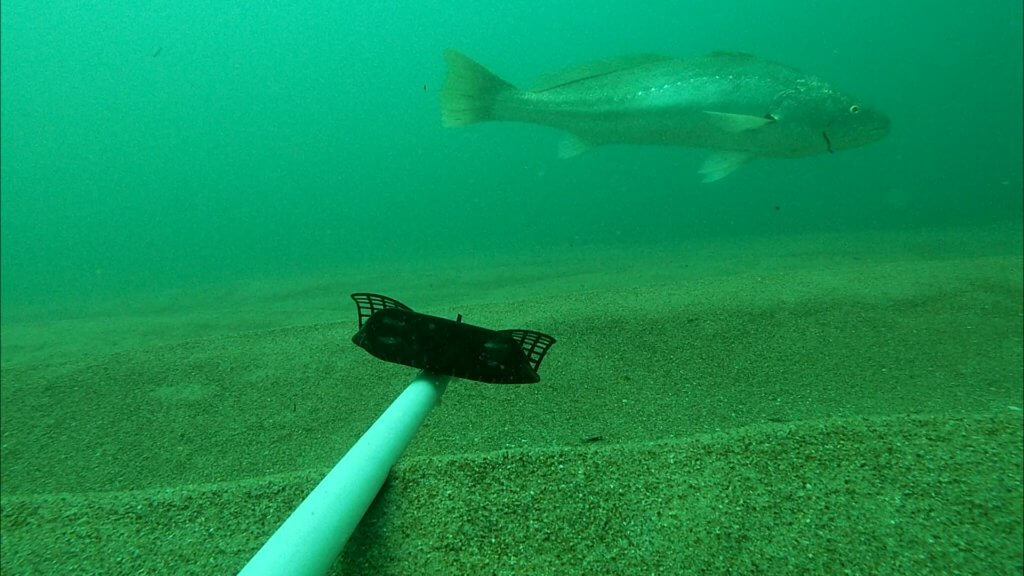
Some anglers also swear by moon rise and moon set as a trigger for them to feed. In rivers and estuaries, an increasing number of anglers are using lures to catch mulloway in our South West, with large soft plastics, bibbed minnows and even stickbaits working at times.
The Swan River has produced some excellent mulloway fishing in recent years, with big fish pushing well up the river, beyond Bassendean. Locations like the Narrows and Causeway are worth trying, as are the deep holes in the lower reaches.
Albany’s Kalgan River is a noted mulloway fishery, with a localised sub-species growing unusually quickly and inhabiting the river in good numbers.
The Murray and Serpentine rivers can also produce some good mulloway, while plenty are caught in Kalbarri’s Murchison River and the beaches either side of it, with Wagoe a favoured spot for shore fishers.
In years gone by, the Carnarvon Jetty was famous for its runs big mulloway and although access to the jetty is extremely limited these days, the waters around it can still hold big numbers of fish at times.
They are also commonly encountered around Shark Bay. For beach anglers a casting outfit from 2.4m to 3.6m, depending on the environment being fished, should do the job, and it should be spooled with 10kg to 15kg line.
For river and estuary fishing much lighter gear will do the job, as mulloway are generally clean fighters and can be fought patiently. Some people also chase them on fly in these environments.
When beach fishing, many mulloway are hooked right at the angler’s feet, so long casts are not a prerequisite for success. A heavier leader of around 20kg is required, but there is no need for wire, indeed it would probably only deter an inquisitive mulloway.
Many anglers prefer running sinker rigs so the fish won’t feel the weight initially, and the weight of the sinker should be determined by the conditions, with the best bet always to go as light as feasible.
Baits should be fished on a set of ganged hooks, or snelled hooks. One of the unique characteristics of mulloway is the way they ‘croak’ at times, leading some to call them croakers.
They can be clearly heard vocalising at times in river and estuary locations, and while it is encouraging to know the mulloway are around, some fishers believe they are toughest to catch when this is happening.
